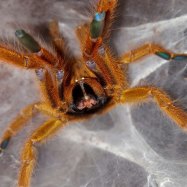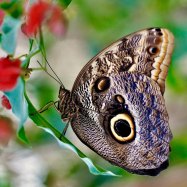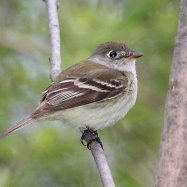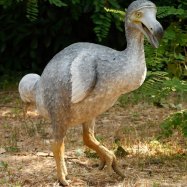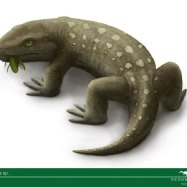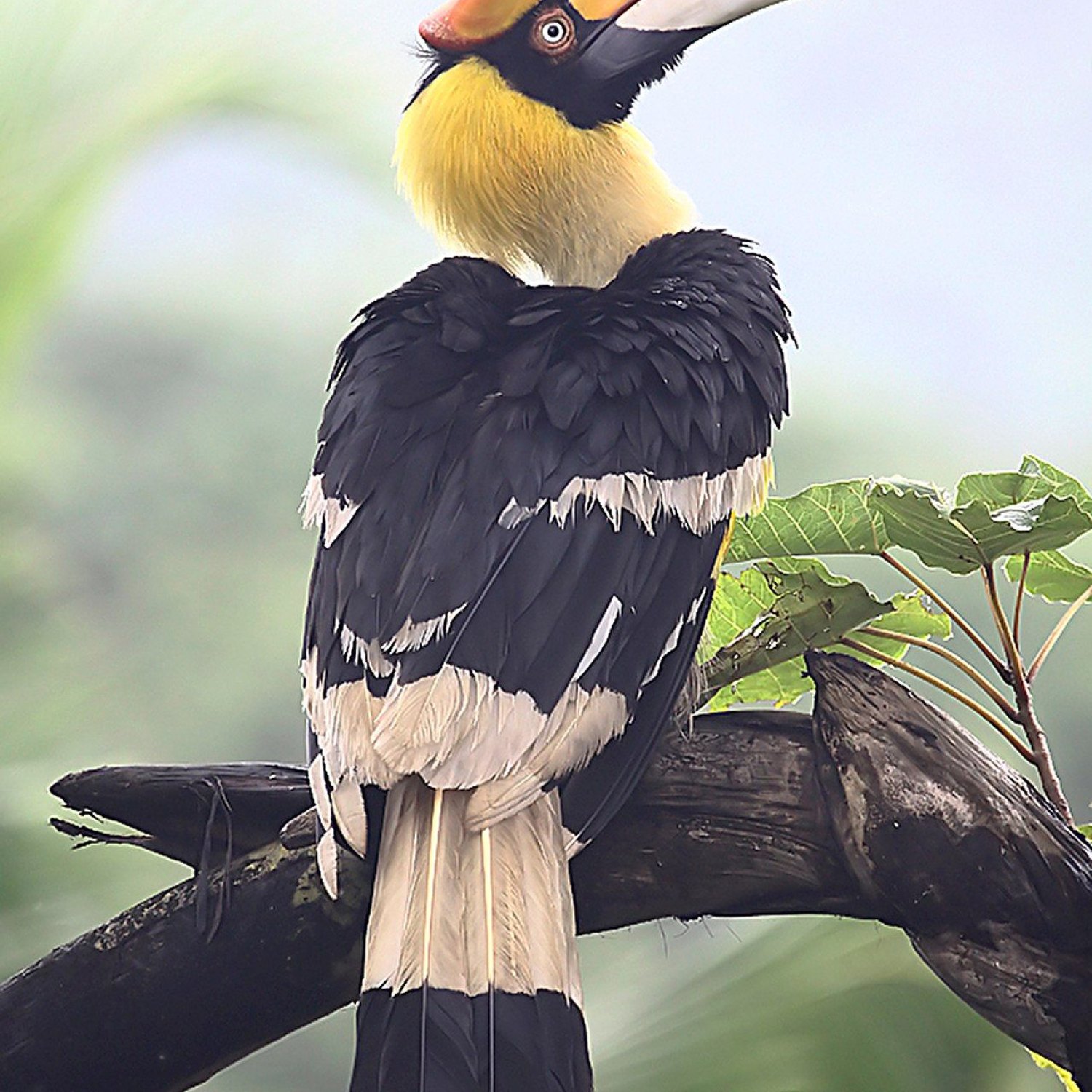
Hornbill
45-150 cm
The hornbill, a majestic bird with a colorful beak, belongs to the Bucerotidae family. Ranging from 45-150 cm in length, they can be found across various locations. These magnificent creatures have large and robust bodies, making them a sight to behold in the wild. #Hornbill #Bucerotidae #Nature.
Animal Details Summary:
Common Name: Hornbill
Kingdom: Animalia
Habitat: Tropical and subtropical forests
The Fascinating World of Hornbills
Nature has a way of creating extraordinary creatures, and the hornbill is no exception. With its majestic appearance and unique features, the hornbill has captured the fascination of many. From its vibrant colors to its impressive size, there is no denying that this bird is a true gem of the animal kingdom.So what exactly is a hornbill? To put it simply, the hornbill is a type of bird belonging to the Bucerotidae family Hornbill. Its scientific name is Bucerotidae, but it is commonly known as the hornbill. This bird is a part of the animal kingdom, phylum Chordata, and class Aves. It is classified under the order Bucerotiformes, which means "horned birds."
Hornbills are found in tropical and subtropical forests, making their homes in Africa, Asia, and Melanesia. However, the specific geographical distribution varies depending on the species. Some species can be found in specific countries, while others are widespread across multiple continents. This flexibility in their habitat makes hornbills adaptable creatures that can survive in various environments.
What sets the hornbill apart from other birds is its unique feeding method. These omnivorous birds have a diverse diet, feeding on fruits, insects, small mammals, and sometimes even other birds House Wren. Some species are known to have a fondness for figs, while others prefer to snatch insects mid-air with their beaks. This versatile diet makes the hornbill a vital part of the ecosystem.
In terms of appearance, the hornbill is a sight to behold. Its colored plumage varies depending on the species, with some sporting vibrant hues, while others are more muted. These birds also have a distinct body shape, being large and robust in size. Their average length ranges from 45 to 150 cm, with some species being even larger.
One of the most remarkable features of the hornbill is its curved bill that resembles a horn, hence its name. This unique beak is a crucial part of the bird's survival, as it is used for various tasks, including cracking nuts and digging for food. Some species also use their beaks to help hollow out tree trunks, making them a vital part of the forest ecosystem.
Apart from their physical features, hornbills also have distinct behaviors that make them stand out. One of the most notable behaviors is their monogamous mating system. Unlike other birds, hornbills form strong bonds with their mates and often stay together for life. These birds are also known for their impressive nesting skills, with some species building elaborate nests made out of mud and feces.
The hornbill not only captivates us with its physical characteristics and behaviors, but it also plays a significant role in different cultures and traditions. In many African and Asian countries, the hornbill is revered and considered sacred. It is often depicted in folklore and art, and some cultures even believe that the bird has supernatural powers.
Unfortunately, despite their importance and cultural significance, hornbills face many threats in the wild. Deforestation and poaching are some of the main causes of their declining populations. Many countries are taking steps to protect these birds and their habitats, but more needs to be done to ensure their survival.
In captivity, hornbills are also popular animals in zoos and wildlife parks. These birds require spacious enclosures and a diverse diet to thrive in captivity. However, some conservationists believe that keeping hornbills in captivity may hinder their ability to survive in the wild. To truly appreciate these birds, we must protect their natural habitats and allow them to flourish in their natural environment.
In conclusion, the world of hornbills is truly fascinating. From their physical appearance to their behaviors and cultural significance, these birds are truly unique creatures that deserve our admiration and protection. As we continue to learn more about these birds, it is essential to remember that they are not just another species, but an integral part of our ecosystem and heritage. Let us continue to appreciate and preserve the beauty of the hornbill for generations to come.

Hornbill
Animal Details Hornbill - Scientific Name: Bucerotidae
- Category: Animals H
- Scientific Name: Bucerotidae
- Common Name: Hornbill
- Kingdom: Animalia
- Phylum: Chordata
- Class: Aves
- Order: Bucerotiformes
- Family: Bucerotidae
- Habitat: Tropical and subtropical forests
- Feeding Method: Omnivorous
- Geographical Distribution: Africa, Asia, and Melanesia
- Country of Origin: Varies depending on the species
- Location: Varies depending on the species
- Animal Coloration: Varies depending on the species
- Body Shape: Large and robust
- Length: 45-150 cm
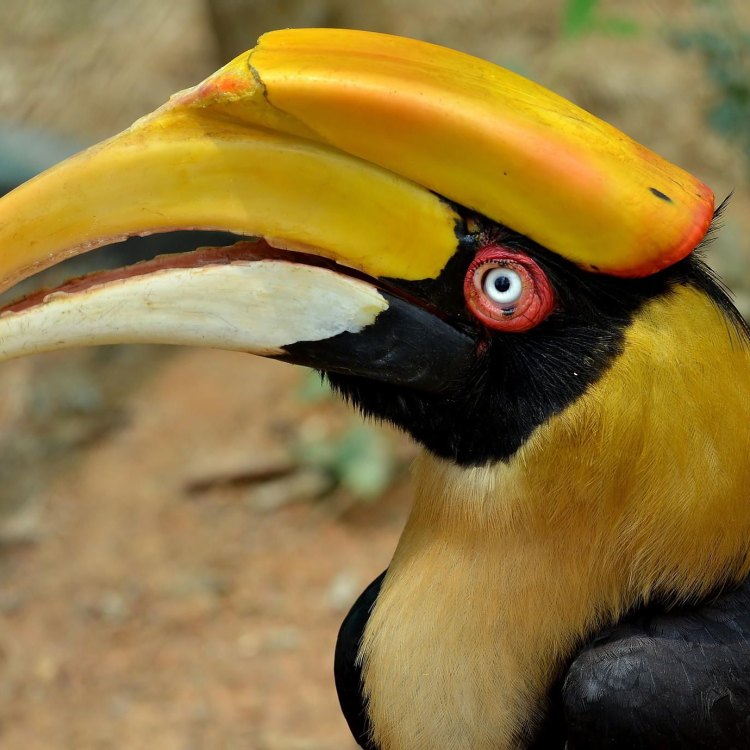
Hornbill
- Adult Size: Varies depending on the species
- Average Lifespan: Up to 50 years
- Reproduction: Sexual
- Reproductive Behavior: Monogamous
- Sound or Call: Distinctive calls and honks
- Migration Pattern: Some species exhibit seasonal movements
- Social Groups: Most species live in small groups or pairs
- Behavior: Diurnal
- Threats: Habitat loss, hunting, and trade
- Conservation Status: Varies depending on the species
- Impact on Ecosystem: Seed dispersers and cavity nesters
- Human Use: Cultural importance and ecotourism
- Distinctive Features: Large bill, casque on top of the bill
- Interesting Facts: Hornbills are known for their unique nesting behavior and cooperative breeding systems.
- Predator: Large raptors and snakes
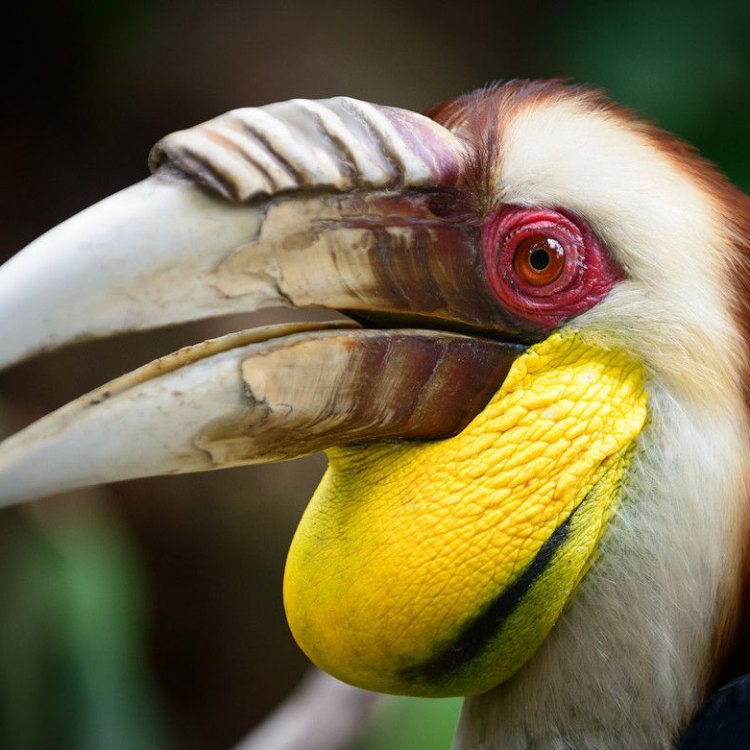
Bucerotidae
The Fascinating World of Hornbills: Masters of the Sky
When you hear the word "hornbill," you might think of a large and majestic bird with a striking bill. And you wouldn't be wrong. But there is so much more to these fascinating creatures that roam the skies of tropical and subtropical regions around the world.There are about 60 different species of hornbills, each with its own unique features and behaviors PeaceOfAnimals.Com. From their distinctive calls and reproductive habits to their impact on the ecosystem, there is much to discover about these birds that have been around for millions of years.
Let's delve into the world of hornbills and explore the secrets of these magnificent birds.
Size and Lifespan
One of the most striking features of hornbills is their size. Depending on the species, they can range from small to quite large. The smallest hornbill is the black dwarf hornbill, measuring only 16 centimeters in length and weighing around 25 grams. On the other end of the spectrum is the southern ground hornbill, which can grow up to 1.3 meters in length and weigh over 6 kilograms.
Their lifespan is equally impressive. On average, hornbills can live up to 50 years in captivity, but there have been records of wild hornbills living up to 35 years Humboldt Squid. This longevity is due to their slow metabolic rate and low reproductive rate.
Reproduction and Behavior
Hornbills are monogamous birds, meaning they mate for life. The male and female work together to build a nest, which is usually a natural cavity in a tree. What makes hornbills unique is that they seal the female inside the nest with mud and droppings, leaving only a small opening for feeding. This behavior is called "walling in," and it provides a safe and secure environment for the female to lay her eggs and raise her young.
As for their behavior, hornbills are diurnal, meaning they are active during the day. They are also social birds and are typically seen in small groups or pairs. They communicate with each other through distinct calls and honks, which are used for a variety of purposes, including finding a mate, territorial disputes, and warning calls.
Migration and Threats
Some species of hornbills exhibit seasonal movements or migrations, particularly those living in temperate regions. They follow food sources or seek out warmer climates during colder months. However, not all hornbills migrate, and some species remain in their home ranges all year round.
One of the biggest threats to hornbills is habitat loss. Deforestation and human development have severely impacted their natural habitats, reducing their available food sources and nesting sites. Habitat loss is not the only danger to these birds. They are also hunted for their meat, feathers, and other body parts, which are used in traditional medicine. The illegal trade of hornbills is a significant contributor to their declining population.
Conservation Status and Impact on the Ecosystem
Hornbills play a crucial role in the ecosystem as seed dispersers and cavity nesters. When they consume fruits and berries, they swallow the seeds, which are then deposited in the droppings, allowing for seed germination and the growth of new plants. As cavity nesters, they create holes in trees where other small animals can also find shelter.
However, with their declining population, hornbills are classified as either near threatened, vulnerable, or endangered, depending on the species. Conservation efforts, such as the protection of their habitats and strict laws against hunting, are essential to preserving these birds and their vital role in the ecosystem.
Human Use and Distinctive Features
Hornbills have been an important part of human culture for centuries. In some cultures, they are revered as symbols of kingship and wisdom, while in others, their feathers and casques are used in head ornaments or traditional ceremonies.
Their most distinctive feature is, of course, their bill. It is large, curved, and brightly colored, and in some species, the male's bill can make up almost 30% of their body weight. The casque on top of the bill is a hollow and lightweight structure made of keratin, like our fingernails. While its exact function is still debated, it is believed to play a role in amplifying their calls or as a visual display during courtship.
Interesting Facts
Apart from their unique nesting behavior and cooperative breeding systems, hornbills have many other interesting traits. They have a specialized membrane that lines their eyelids, which they use to clean their eyes and protect them from debris while flying. They also have the ability to control their body temperature, allowing them to regulate their energy expenditure and survive in extreme temperatures.
Also, despite their large size, hornbills are excellent flyers and can maneuver through dense forests with ease. They can fly at high speeds and can even hover in one place, making them masterful hunters of small prey.
Predators
As with any creature in the wild, hornbills also have predators. Large raptors, such as eagles and hawks, pose a threat to young hornbills, while tree-dwelling snakes prey on their eggs and young chicks. However, hornbills have evolved to protect their nests and young through their unique "walling in" behavior.
In Conclusion
Hornbills are truly masters of the sky. With their large size, unique features, and intriguing behaviors, they continue to captivate us. But their survival is in danger, and it is our responsibility to protect these amazing creatures and their critical role in the ecosystem. Let us admire and appreciate hornbills from a distance and work towards their conservation, ensuring that future generations can also marvel at the magnificent masters of the sky.
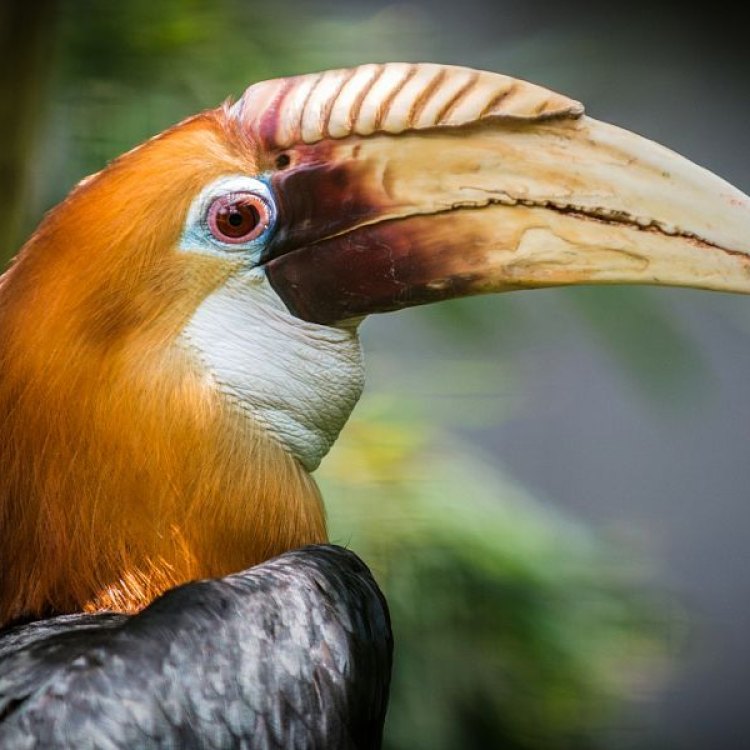
The Fascinating World of Hornbills
Disclaimer: The content provided is for informational purposes only. We cannot guarantee the accuracy of the information on this page 100%. All information provided here may change without prior notice.

